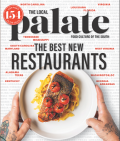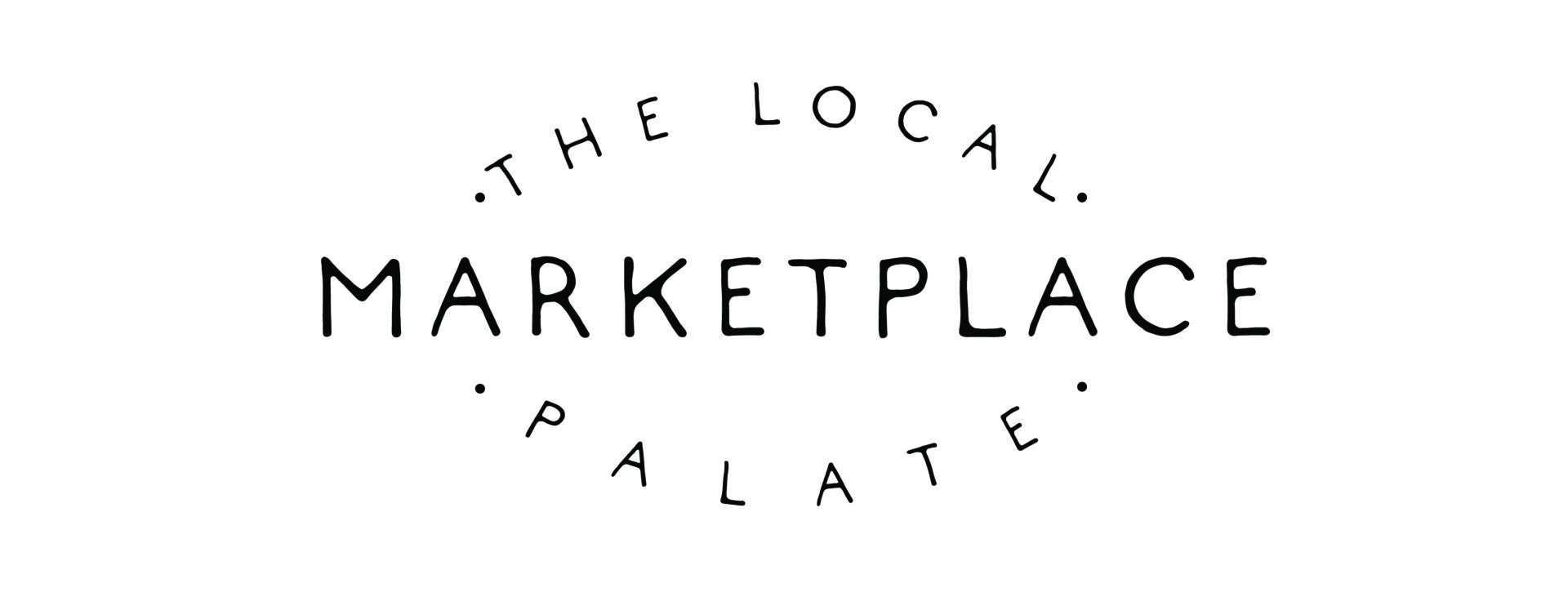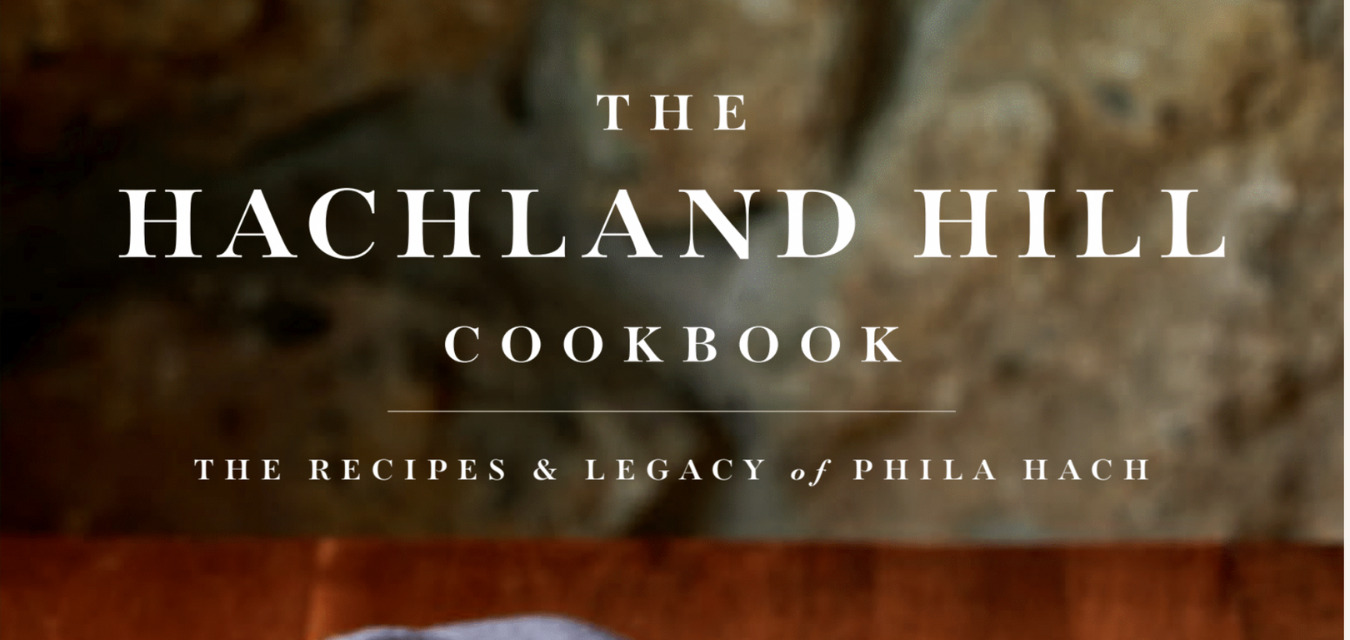Carter Hach, of Hachland Hill Inn just outside of Nashville, was raised in the kitchen. Some of his earliest memories are of baking with his grandmother, Phila Hach, a one-time flight attendant, cookbook author, television show host, caterer, and chefowner at Hachland Hill Inn, where she built a culinary reputation as the queen of what she called “country cooking,” alongside her kitchen partner, Ruth Williams. When Carter took over at the inn in 2017, he had a lot to live up to—but he had already started brainstorming The Hachland Hill Cookbook, a medley of stories about Phila plus recipes he has been making since childhood that reflect his unique path as the current chef at Hachland Hill.
This cookbook is made for the entire year, and its recipes range from the familiar and everyday to the surprising and celebratory—but it also provides standouts for putting together an unforgettable holiday table. These are recipes that are meant to be shared, in keeping with the eclectic Southern ethos that has been cultivated at Hachland Hill since its founding in 1956.
Exploring the Recipes and Legacy of Phila Hach
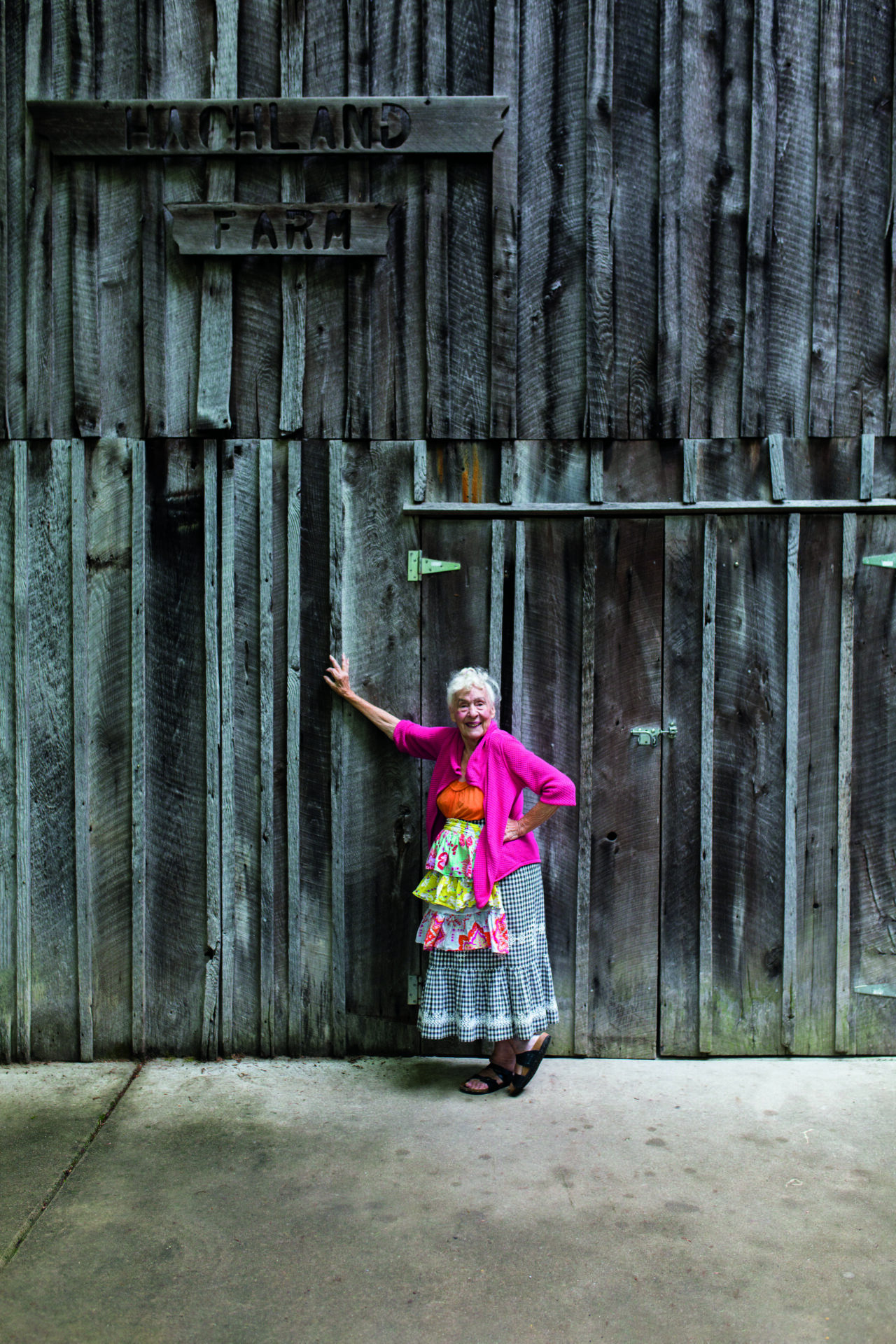
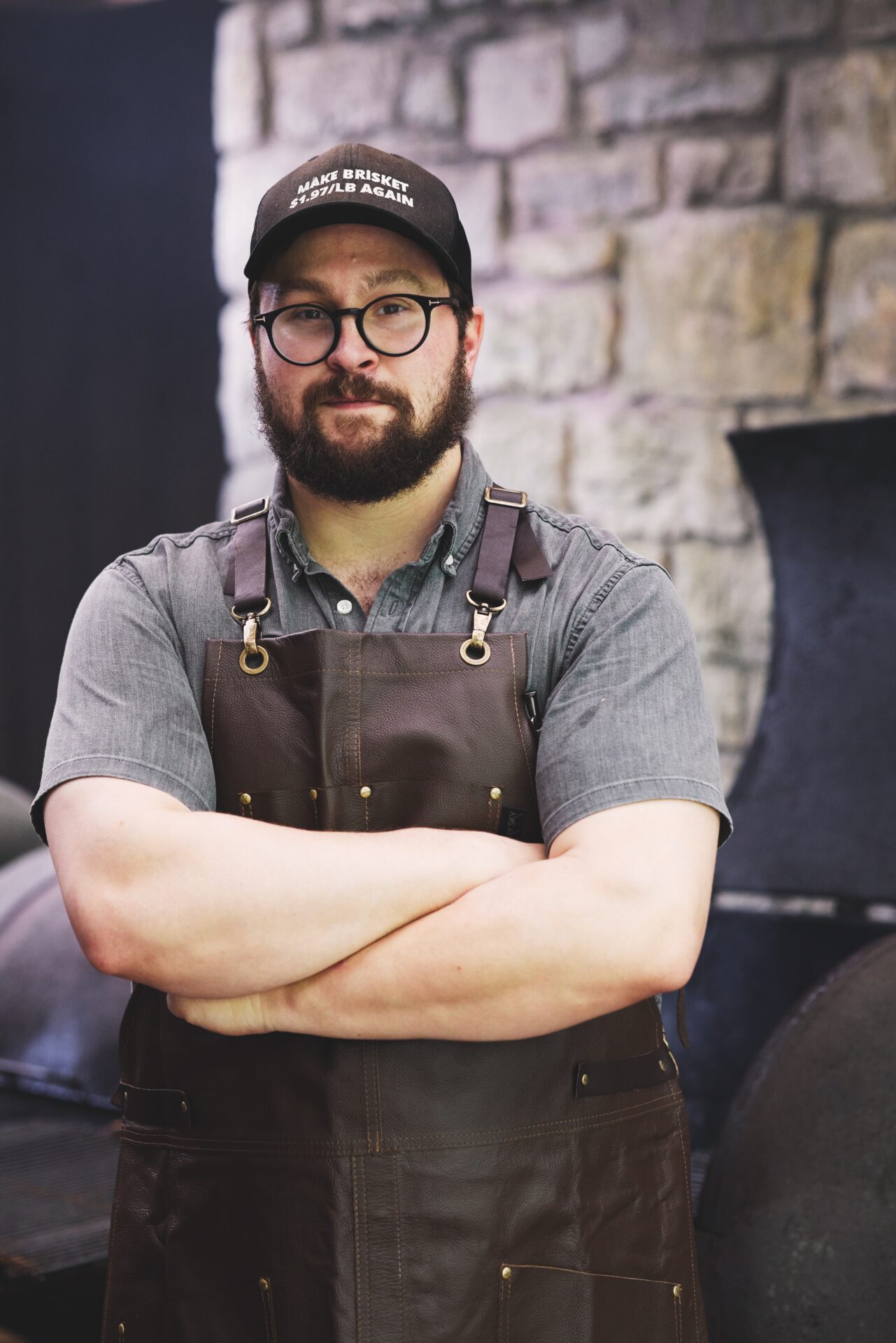
How did Phila and Ruth shape you as a chef and influence the recipes you include in this book?
I grew up cooking with my grandmother, so Southern food was certainly ingrained in me, and then I studied abroad, which somewhat paralleled [Phila] traveling as a flight attendant. I went around the world and kind of fell in love with the marriage of Southern cuisine with other countries’ cuisines, which is exactly what she had done fifty years earlier. Ruth schooled me and made sure I was ready to go with everything that was Southern cooking. She’s probably the person I’m most excited to share the book with. The menus reflect what the two of them taught me—country cooking—but also the places I’ve visited.
You wrote that Phila learned to cook without recipes. Is that how she taught you as well?
I absolutely learned and still operate that same way. That was the most intensive part of the process with the book because all of the recipes were recipes that I had done but had never written out or had any notes for them. So I had to rework all of them and pinpoint those fine details, those measurements. Certainly, in that Southern world, the biscuits, pies, cookies, things like that are second nature and don’t really ever follow recipes, but I did go and do an intensive study of bread and pastry in New York, because that is one science that I think is worth studying.
In addition to your banh meatloaf, what other recipes influenced by your travels are in the cookbook?
The lebkuchen. I’ve tried to pay homage, in a lot of aspects, to my family lineage. Another one would be the mulligatawny recipe, which is Indian. Phila had a classic recipe that was the basis for mine; however, I’ve taken up smoking meats in a big way—she wasn’t a pitmaster—so I added smoked goat to it. That hickory or white oak smoke adds a little Tennessee flair to a rather South Asian dish. Then the roasted okra with lemon thyme aïoli—that’s actually the cover of the book—I did ground coriander, cumin, so it has some of those Middle Eastern flavors to it.
Were the lebkuchen a part of your childhood holiday tradition at Hachland Hill?
Phila was known for having a vast arsenal of Christmas cookies on display, and I do remember lebkuchen—and Bavarian or molasses cookies, that same flavor profile—were my most fond memory, and that’s how I ended up choosing that specific cookie to share.
Is there a recipe in the cookbook that’s your favorite?
The beef tenderloin. That was every holiday; she would always make beef tenderloin and rolls. For the few days following that holiday we’d have plenty of little beef tenderloin sliders to snack on, too.
Do you have any catering war stories like Phila’s from the book, when she had to make pies at a Kroger on her way to an event?
I had done a wedding cake for friends of mine. Since we were part of the wedding, I couldn’t be all eyes on it the whole time, so I had to drop it off at the hotel. Part one to the story was the concierge set it on a rolling chair. And I said, “No, let’s not do that!” Then when it got to the wedding— this was in August in Tennessee a few years ago—they had not put this cake in the cooler since I’d dropped it off eight hours before. All of the ornaments, fondant, all that, had dropped pretty much all the way down, so while everyone was going through the buffet after the ceremony, I was in this barn in my suit and tie trying to fix the cake.
Would you say there have been some significant parallels between your life and career and Phila’s?
It’s been a blessing to pick up where she left off. I won’t say [it wasn’t] intimidating that first year—she and Ruth had big shoes, but the challenge itself was kind of fulfilling—which, humbly, I think I succeeded in carrying on her torch. I’m actually expanding—I’m opening a restaurant in Nashville in February [2023]. It’s a gastropub and beer garden and so the whole menu is Southern but with some kind of Swiss and German influence. The bratkartoffeln, the welsh rarebit, there’s a number of things from the book that are absolutely going to be staples on the menu.
Hachland Hill’s Lebkuchen (Delicious German Cakes)
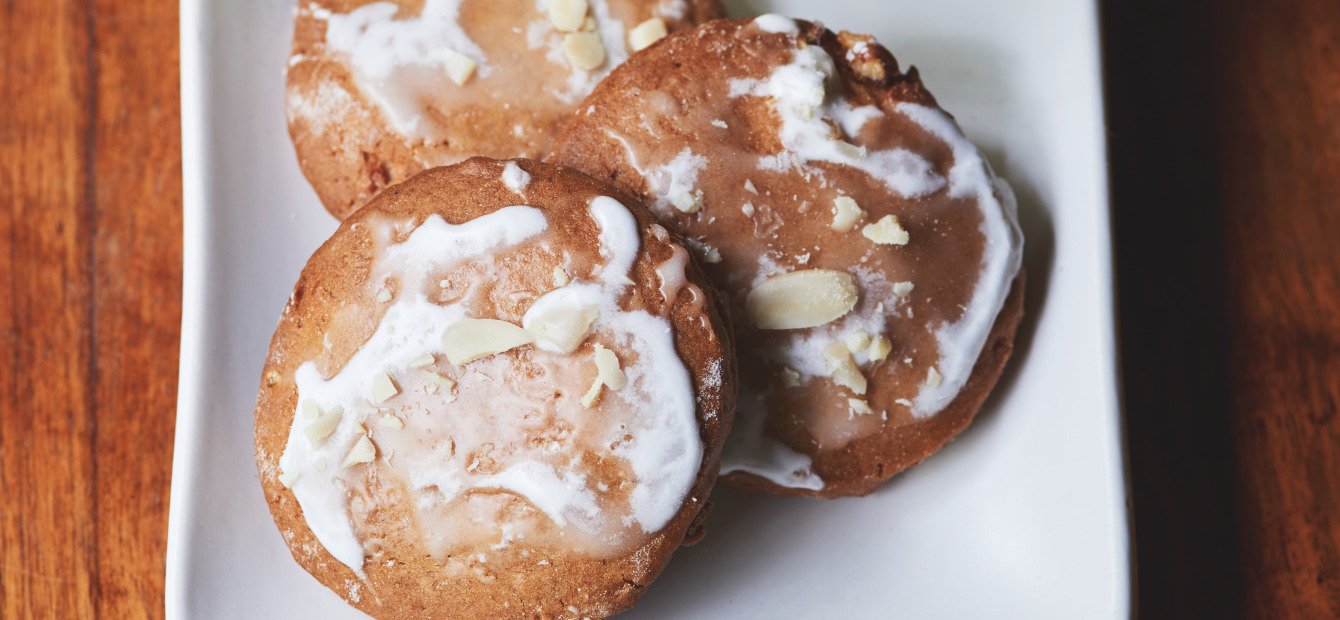
recipe 
yields
Makes 16 cakes
1 cup molasses
1 cup honey
3 cups sugar
1¼ cups shortening
11 cups flour, divided
½ cup almonds, chopped, plus more for garnish
1½ cups mixed walnuts and pecans, chopped
1 teaspoon cinnamon
1 teaspoon ground clove
2 tablespoons brandy
½ cup citron, chopped
1 teaspoon salt
1 teaspoon baking soda
3 eggs, well beaten
1 cup powdered sugar for glaze
Ingredients
steps
- In a heavy-bottomed pot, bring molasses, honey, and sugar to a boil. Simmer for 5 minutes. Reduce heat but while still hot, stir in shortening, 4 cups flour, nuts, cinnamon, clove, brandy, citron, and salt. Let cool. Dissolve baking soda in boiling water, then add to dough. Add eggs one at a time. Add remaining flour as needed to make stiff dough. Wrap in plastic wrap. Refrigerate for 3-4 days.
- Preheat oven to 350 degrees. Roll out dough onto floured work surface. Cut into desired shapes. Bake for 12-16 minutes. In a small bowl, make glaze by adding 2 tablespoons of hot water to powdered sugar. Stir to combine. Frost cakes with glaze and decorate with almonds.
Adapted from The Hachland Hill Cookbook. Copyright 2022 by Blue Hills Press. Used with permission of the publisher. All rights reserved.
